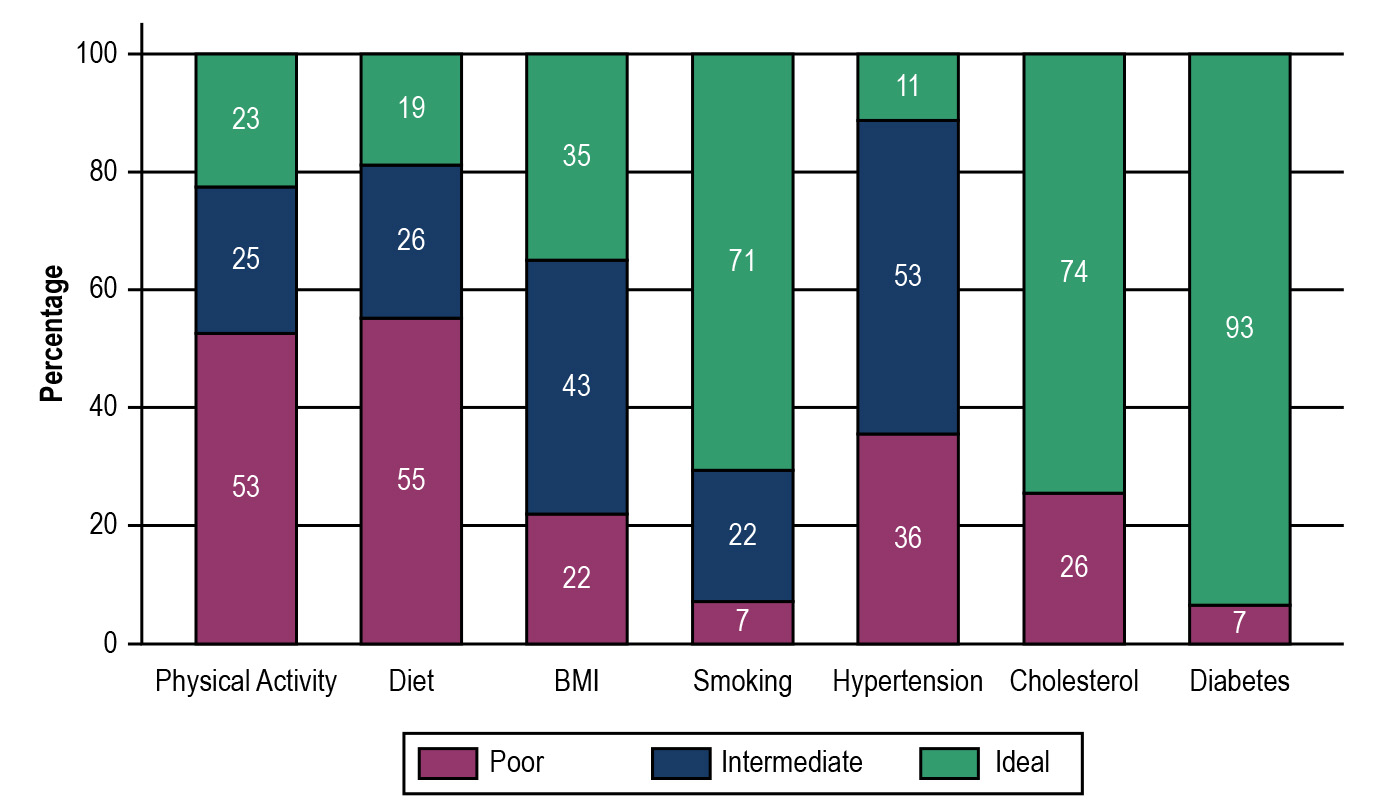Volume 112, Nº 3, March 2019
DOI: http://www.dx.doi.org/10.5935/abc.20190005
ORIGINAL ARTICLE
Ideal Cardiovascular Health and Job Strain: A Cross-Sectional Study from the Amazon Basin
Davi Dantas Muniz
Kamile Santos Siqueira
Cristina Toledo Cornell
Miguel Morita Fernandes-Silva
Pascoal Torres Muniz
Odilson Marcos Silvestre
Dr. Davi Muniz

Figure 1 – Stacked bars showing the prevalence of cardiovascular risk factors. BMI: Body mass index (kg/m2).
Abstract
Background: Ideal Cardiovascular (CV) Health is characterized by four ideal lifestyle parameters and absence of cardiovascular risk factors. The prevalence of ideal CV health in the Amazon Basin and the influence of job strain on CV health in this setting are uncertain.
Objective: To evaluate the prevalence of ideal CV health and its relationship with job strain in a secluded area from a developing country.
Methods: Job strain was evaluated in 478 employees from an university in the Amazon Basin by a questionnaire that classified participants as passive, active, low or high strain, according to the demand-control model. CV health was evaluated using the American Heart Association 7 health factors (diet, physical activity, body mass index (BMI), smoking, hypertension, diabetes and hypercholesterolemia). Participants were classified as having ideal, intermediate or poor CV health. The level of significance was set at p < 0.05.
Results: The mean age was 44.3 ± 12 years, 65% were men, and 35% were faculty. No participant fulfilled the criteria for ideal CV health. Intermediate CV health was found in 44 (9%) and poor in 434 (91%) individuals. Considering low strain as a reference group, individuals classified as high strain, active and passive had a non-significant (p > 0.05) increase in the chances of having poor CV health. When adjusting for possible confounders, high job strain was associated with poor BMI (> 30 kg/m2), (OR 2.11, 95%CI 1.06-4.22; p = 0.034) and poor diet (OR 2.31, 95% CI 1.29-4.13; p = 0.005).
Conclusion: Job strain was not associated with cardiovascular health, but high job strain was related to obesity and poor diet. Given the high prevalence of poor CV health and lack of participants with ideal CV health, policies focusing on health education and lifestyle interventions are paramount to this population. (Arq Bras Cardiol. 2019; 112(3):260-268)
Keywords: Cardiovascular Diseases/epidemiology; Risk Factors; Prevention and Control; Amazonian Ecosystem; Stress,Psychological; Obesity; Eating Disorders.















